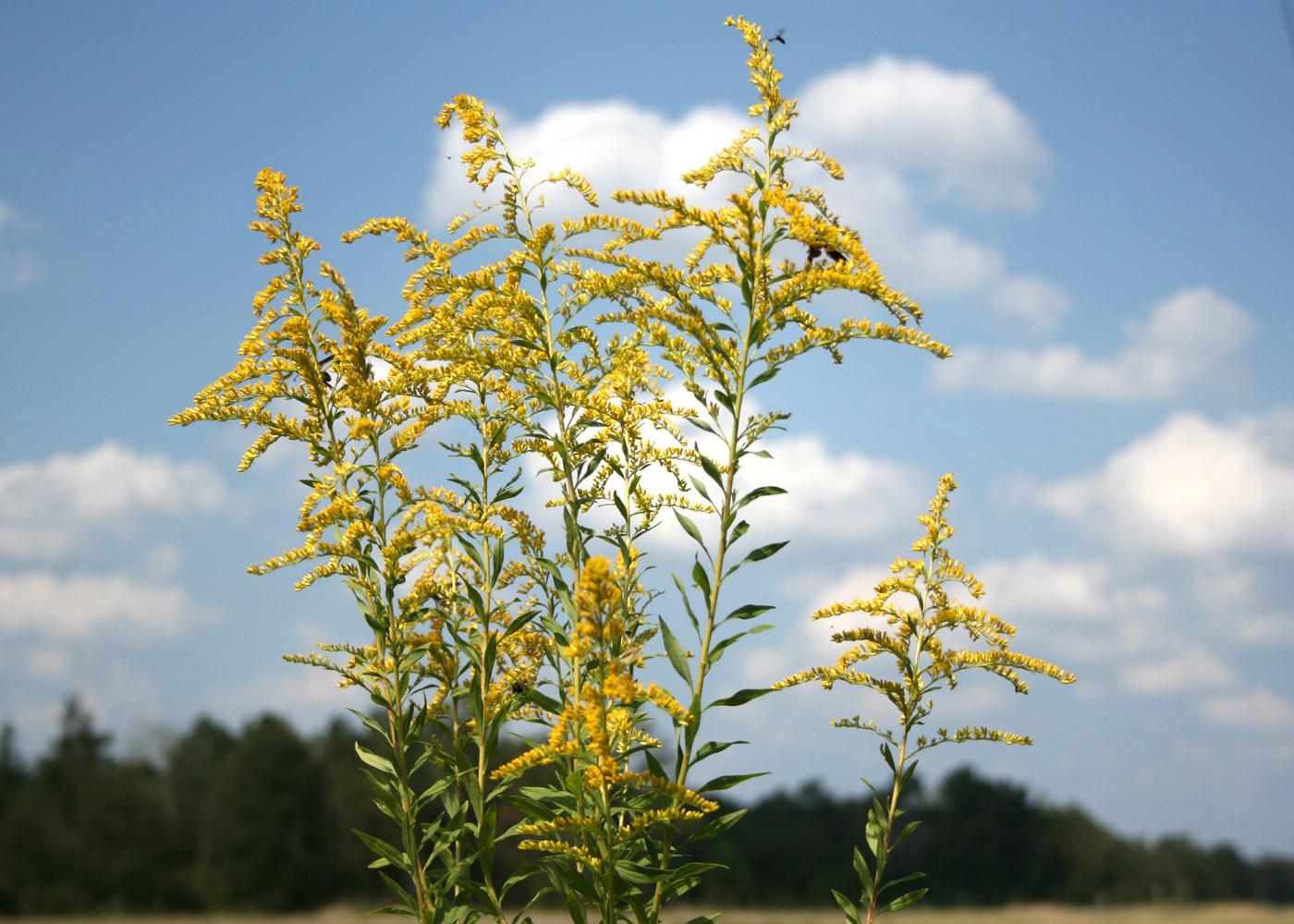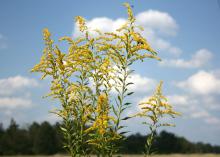Information Possibly Outdated
The information presented on this page was originally released on September 30, 2010. It may not be outdated, but please search our site for more current information. If you plan to quote or reference this information in a publication, please check with the Extension specialist or author before proceeding.
Goldenrod in gardens gives great fall color
I firmly believe that many of our flowering landscape plants are only a step or two away from being weeds growing in a ditch. But goldenrod is an exception. Can you believe some gardeners are intentionally growing goldenrod?
Most folks recognize goldenrod growing wild when they see the explosion of golden color late in the summer, just before the temperatures start to decrease in the fall.
In Mississippi, we typically see European goldenrod, which can reach up to 4 feet tall. European goldenrod form branches from the upper portion of the main stem. Flowers develop on these branches and arch outward.
There has been a lot of evaluation of and selection for more tame varieties appropriate for the landscape. Midsized varieties, like prairie goldenrod, can be used in the middle of the shrub border, while smaller selections may be suitable for the front row. Peter Pan and Golden Baby have dwarf growth habits.
Perhaps the selection with the most outstanding flowering habit is Fireworks, which naturally branches close to the ground. Flowers cluster on these arching branches and radiate in all directions. When in full flower, this variety resembles yellow sparks streaming outward from exploding fireworks. Fireworks will grow to 3 to 4 feet tall and wide.
Goldenrod varieties tend to be unbranched and can look a bit top heavy, especially when flowering. They are a common sight along many highways. More dense and bushy plants can be trained by pruning them halfway back in the late spring. Later pruning in the summer can inhibit flower development.
Goldenrod attracts many insects, both pollinator and predator, with its abundant floral display in the fall, when other plants are starting to fade. Goldenrod make beautiful cut flowers for the vase, and flowers retain their golden yellow color when dried.
Goldenrod is susceptible to rust, a fungal disease that attacks the stem and leaves. Prevent rust with good air circulation.
Multiply goldenrod easily by clump division. Autumn is a good time to divide clumps and replant. Transplanted clumps will readily establish in the cool, wet fall season. Best growth is in full sun or on the edge of woodland settings. Don’t worry about epidemic growth in your garden; stray plants are easily pulled up and removed.
If you are concerned about allergies, remember that goldenrod does not cause hay fever. Goldenrod is pollinated by insects and does not produce much pollen. The real culprit is ragweed, which is wind pollinated and produces billions of pollen grains. Both flower at the same time, but goldenrod, with its showy, feathery, golden flowers, often gets the blame.









